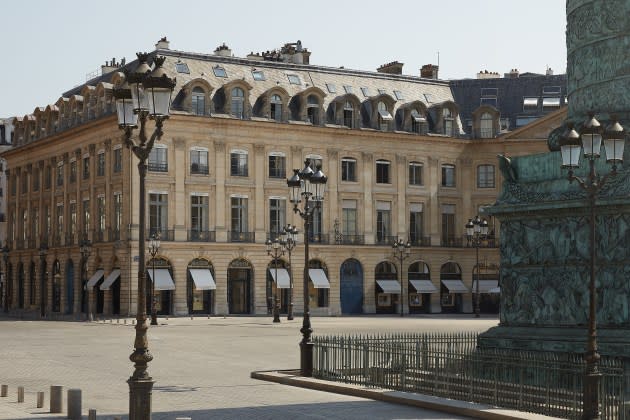EXCLUSIVE: Boucheron Reinforces High Jewelry Production With Paris Atelier Purchase

PARIS — Boucheron is the latest jeweler to join the fray of luxury houses scooping up specialized ateliers in an effort to secure supply chains and know-how.
The Kering-owned jeweler on Monday revealed its first acquisition, a Paris-based workshop that has the Belter, Etablissements E. Blondeau, Chanson & Cie. and FG Développement companies under its umbrella, with an eye to reinforcing its high jewelry capabilities.
More from WWD
Outside View: Collaboration Offers Fastest Route to a Greener Fashion Industry
Why Are There So Few Female Creative Chiefs at the Big Fashion Houses?
Financial terms of the deal, which became effective Oct. 31, were not disclosed.
Boucheron chief executive officer Hélène Poulit-Duquesne said the move marked a new chapter in the jeweler’s history. “It will reinforce the production capacity of Boucheron’s historical workshop on Place Vendôme, enabling us to meet the increasing demand of our clients while maintaining the excellence of our craftsmanship,” she said.
The atelier is expected to remain in its current location.
Some 60 craftspeople, who range from computer-assisted design specialists and jewelers to lapidaries and stone setters, will be working on Boucheron’s high jewelry collections alongside the members of the jeweler’s existing atelier located at 26 Place Vendôme.
Its founder Cédric Gangemi, who trained as a jeweler, worked at Chanson & Cie, established in 1961, and Blondeau, founded in 1978, before taking them over. In 2017, he regrouped the workshops under one roof, with another called Belter joining the atelier’s portfolio. FG Développement became the fourth workshop in the structure when it was created in 2019.
Reporting third-quarter results in October, parent group Kering highlighted Boucheron’s positive performance, attributing it to the success of its high jewelry and mainline collections. Overall group revenue saw double-digit declines in the period amid a wider luxury slowdown and geopolitical unrest.
Having a high jewelry atelier on or in the vicinity of Place Vendôme remains a sign of hard luxury prestige, with houses such as Louis Vuitton and Chanel installing them in their respective boutiques in 2012. As part of its revamp of its 13 Rue de la Paix flagship, Cartier carved out space for 18 workbenches dedicated to high jewelry, bathed in natural light both from the interior skylight and the street outside.
In parallel, luxury conglomerates have been snapping up suppliers while securing the skills and know-how of the jewelry eco-system through training programs, in a bid to increase manufacturing capabilities in the long run.
In April, LVMH Moët Hennessy Louis Vuitton revealed its intent to purchase the Platinum Invest group in order to strengthen its high and fine jewelry manufacturing capabilities — with a particular focus on enhancing Tiffany & Co.’s production output.
The group previously acquired Italian jewelry manufacturer Pedemonte, which employs some 350 people in northern Italy, while Christian Dior snapped up Oteline and FG Manufacture, two France-based companies that have the “Entreprise du Patrimoine Vivant” (or living heritage company) status.
While Cartier had no plans to acquire its partners, according to CEO Cyrille Vigneron, it made training or reskilling an integral part of its latest jewelry plant in Turin.
Its Richemont stablemate Van Cleef & Arpels said in April it would open two new jewelry workshops in France within the next three years, extending its existing training programs to these new locations.
Best of WWD
